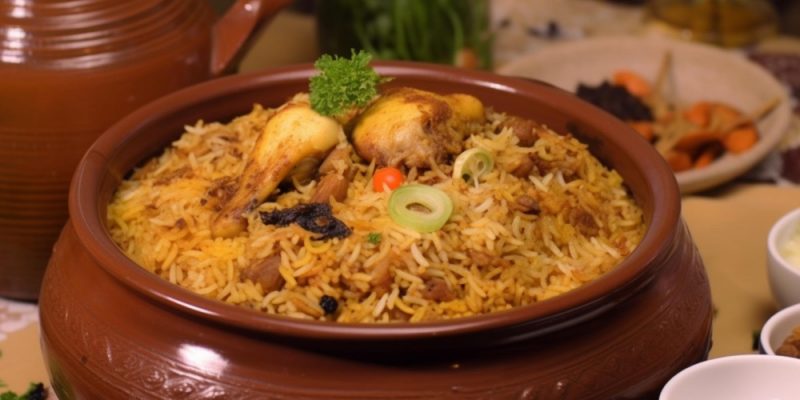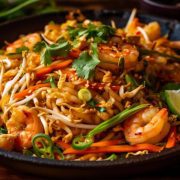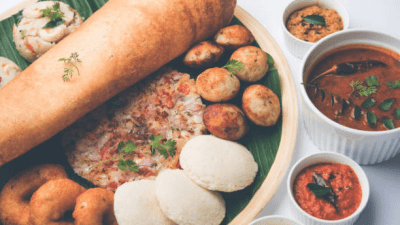If there’s a food that encapsulates the feeling of India, it has to be the Biryani. It’s rich, it’s got layers, and it has as much going on as India does, culturally speaking. It brings together elements that somehow co-exist and do so wonderfully. Biryani became the undebated monarch of Indian cuisine; it doesn’t divide between royalty and ordinary men; it’s inclusive and regal at the same time. Biryani has a lot going for it. It’s adapted by the people of every region and carries their distinct scent – spice pun intended.
Many say that the Mughal and Persian invaders bought the Biryani. The soldiers on war grounds brought the recipe to life by adding all the ingredients they had in store into a pot. What resulted was way more important than what the wars led to. Royalty got in, and now, Biryani is the favoured dish, the comfort meal, and the luxury treat we save for ourselves. A wonderful thing that erupted from violence.
The Art in Biryani
Biryani is a hot pot meal, a canvas; it’s a place to bring out the artist in you. Like art, the Biryani has ground rules to make sure you don’t mess with perfection – rice, aromatic spices, and a choice of meat. With that, you’re all set to jump into a culinary cathartic experience.
The ingredients of the Biryani vary based on the region – the meat and the vegetables used. The centre of the dish is rice, which is cooked to be fragrant and packed with spices. The pocket of spices used in Biryani makes the dish come alive. Cloves, cinnamon, pepper, bay leaf, star anise, cardamom, and fennel seeds all come together in perfect harmony. How do you know that they have? The smell will tell you.
You can pick a meat of your choosing or switch it up with potatoes, paneer or any vegetable of your choice. Marinate it and cook it till the flavour overwhelms you (this is key because the rice will balance it). Once you’ve achieved the perfect biryani masala – this could be store-bought or made at home, you’re in for a ride. You can layer the masalas, meat, and rice and finish it with crunchy roasted onion, cashew, and badam, with a heartful drizzle of ghee.
The colour of the Biryani is always added with the masalas and spices. These make or break the Biryani. While South Indian Biryani have green chillies, pepper, cumin, etc, North Indian Biryani has more prevalent spices, like red chillies, saffron, dry fruits, etc.
The cooking process also can be different. It’s either all thrown together and cooked, or the two elements are semi-cooked and then thrown together to smoke their flavours into each other. Biryani is often cooked in an earthen pot to give it that distinct aroma; it can also be made in a cooker for those looking for a quick solution. The easiest way to get your hands on authentic, aromatic Biryani is to order it from the right place. Additionally, one might find egg, meat and potatoes in their Biryani – go big or go home, right?
Final thoughts
Different regions have taken over the concept of Biryani and given it new meaning. The Hyderabadians like it is spicy, the people further up north prefer lamb meat in their Biryani, and for the vegetarians, there’s paneer and mushroom biryani. Biryani doesn’t discriminate – there’s a biryani for everybody.
It’s often served with raita and a side of pickle. Biryani is a low-effort dish with glorious results – not all great things have to be difficult.
If your Biryani doesn’t smell like it was made to offer to gods from another realm to seek their forgiveness for an unspeakable crime, you could do better.
Also read – The Art of Perfectly Spiced Chicken Biryani: A Masterclass
A food enthusiast and a blogger – someone who likes to eat and write about it. I’m passionate about exploring different cuisines and challenging my palette. I give into my food craving regularly and am often on the hunt to find my new favorite food place in town.

















[…] Also Read- The Art of Making Perfect Biryani in North India […]